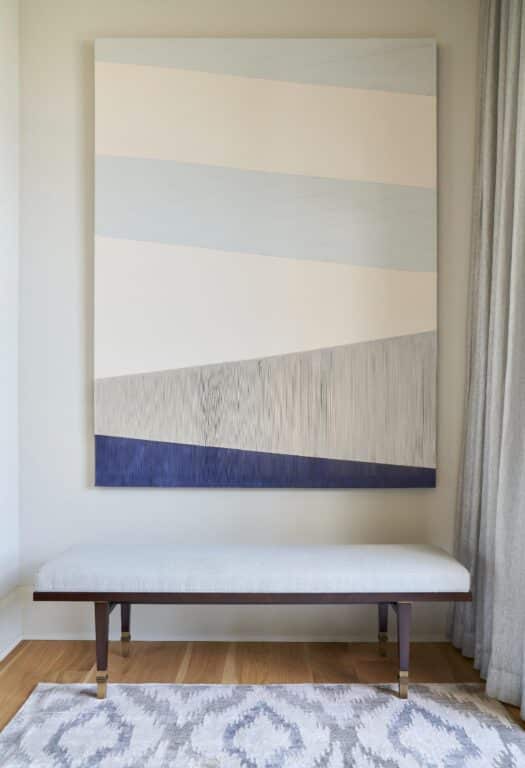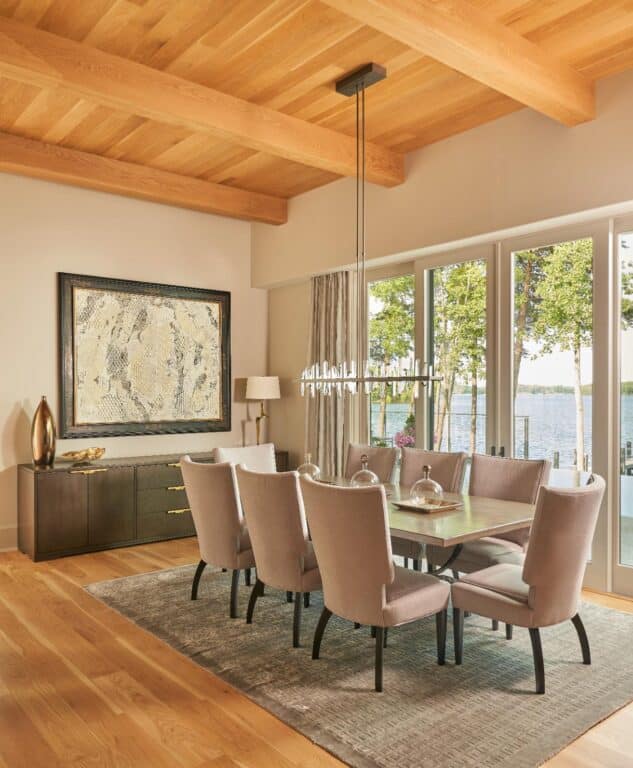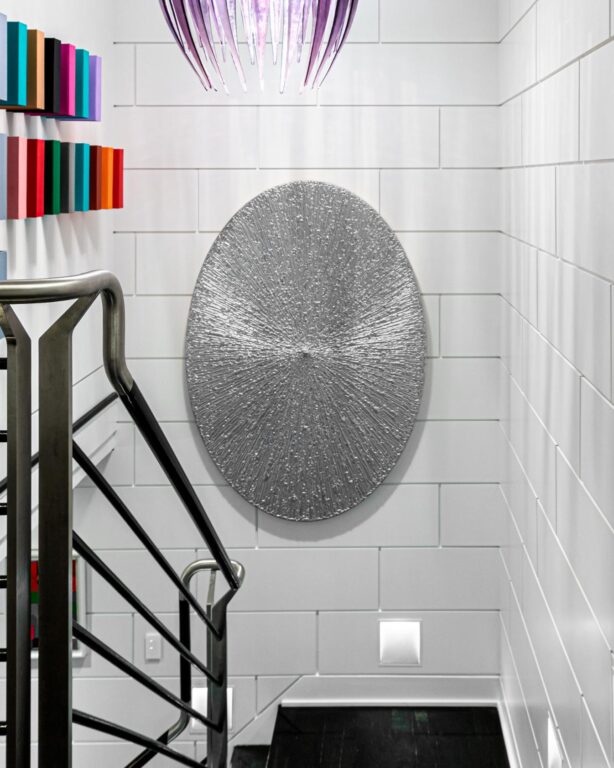Just moved in? Here’s how to infuse your new home with art
Aristotle once said, “The aim of art is to represent not the outward appearance of things, but their inward significance.”
There are dozens of reasons why we as homeowners want art on our walls and in our halls. It is not only an extension of the décor but also a window into our souls. It’s a chance for us to express our emotions, our history, our inner workings. But sometimes expressing ourselves isn’t easy. It’s hard to pinpoint exactly what we want to say and how we want to say it—particularly when we are entering a new space to call our own. Homeownership is never permanent and so often we find ourselves staring at a blank canvas of a new home with unadorned walls waiting to be brought to life. What do we do? How do we begin?
“We usually encourage people to build a collection over time and when you’re filling a house and you’re trying to finish rooms it sort of defies logic,” says Heather Gaudio, principal at Heather Gaudio Fine Art in Greenwich, CT. She often advises clients who are moving into a new house and helps them curate pieces for each room. While her advice might be different for a young family or empty nesters, the process is the same.

Start by Exploring Art
Particularly for young clients who are just beginning to think about their relationship with art, Gaudio says she recommends her clients do a lot of research before they make any purchases. Stroll galleries, browse magazines, visit museums. Determine what speaks to you—from subject matter to color to medium. Oftentimes, young couples will find they gravitate toward different things: one spouse looking for clean and graphic images and the other being drawn to more abstract or expressionist pieces.


Know Your Home
Those moving into a new build should share the plans with the gallery pro they are working with. Gaudio goes to her clients’ home to understand the layout and coordinates with decorators and architects to find the right pieces. “A lot of dealers will say décor doesn’t matter but I believe it really does matter,” says Gaudio, adding that understanding a client’s taste in décor gives a “basic sensibility of what the family lifestyle is.” Do they want things that are more organic? Are they process oriented? Are they more interested in graphic work or do they want blue chip collectible art? Practically speaking, the placement of the art is critical as well. As homeowners shift toward designing houses with vaulted ceilings and lots of windows and open spaces, now more than ever Gaudio finds her team has to consider not only dimension but also sun exposure and temperature.
Spend Strategically
Placement is important when it comes to budgeting as well, she adds. When you’re curating a collection over time, you can carefully select each piece and buy what inspires and delights you. Often, you’ll know where it’s going before you get it home. But when you’re moving into a new house and every room needs something, it’s smart to strategically spend more where your art will have the most impact. “You might want to spend more in your foyer than in your powder room,” adds Gaudio. The primary bedrooms, the family room, the dining room and the foyer are all spaces where the right piece can have a big impact, and a good place to start. But while it seems critical to want a striking painting over the fireplace, don’t rush to purchase something just to fill a void, she advises. “Some people attempt to fill their walls and get to the finish line and they’ll find an artist they like and buy 10 works because they’re affordable,” she says, advising against this practice. The risk is that the space then feels impersonal. “You may not find the piece that fits over the fireplace for the price in the time frame,” says Gaudio, and that’s OK.


Work with an Expert
In this way, finding the right professional to help you navigate the art world and make those decisions can be a big help and worth the investment. Choosing a gallery to help you curate art for your home is a personal and customized experience. Gaudio says her relationship with her clients is oftentimes a long and intimate one, so she starts by getting to know the families she works with. “I ask them about their children, what their interests are and what they want to accomplish”, she says. A smaller gallery like hers with a broad roster of artists can provide a relaxed atmosphere to work in compared to large urban galleries and help clients navigate more competitive environments and build relationships to get access to inventory from a particular artist. A professional can also help you determine what pieces you already own should be placed where, and what to pair with them if you are shopping for something new.





Art collecting is an experience and a journey. You may not keep every piece you have collected forever and that’s OK. Just like our homes change to suit our needs at various times in our lives, so does our art collection. “It’s going to be fun,” says Gaudio. “It shouldn’t be a stressful endeavor. It can be serious and important, but it should be something that enhances your life. Anything worth doing requires a little pause and a little help and patience and that’s what we’re here for.”
